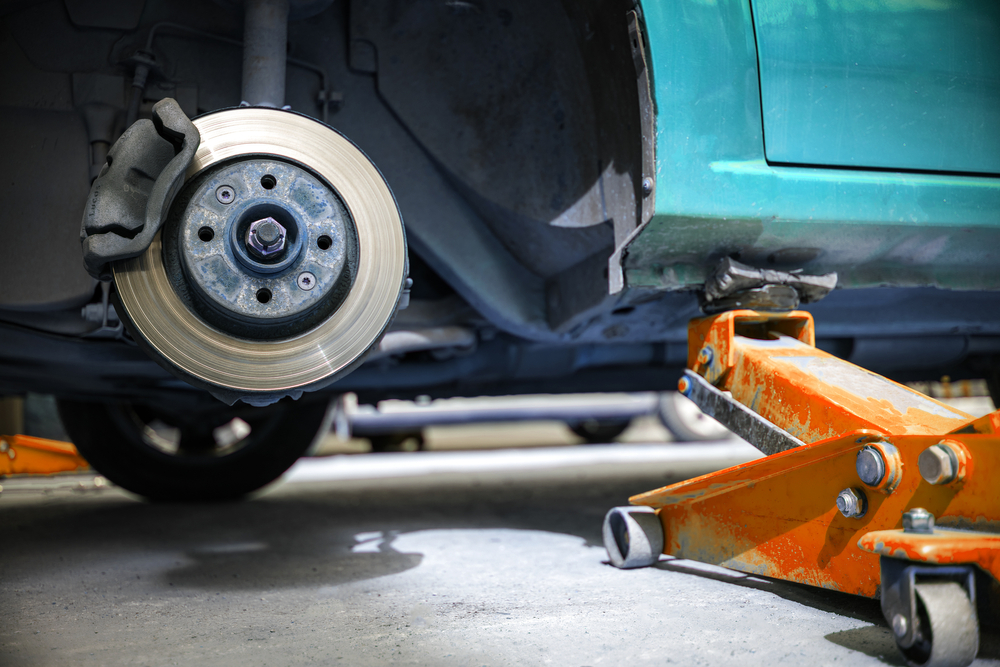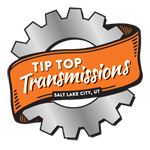Within the realm of auto work and specifically transmission services, there will often be a need to transport a transmission from one area to another, which will require its safe and effective removal. Among the tools used to do this, one of the most well-known and useful is the transmission jack.
At Tip Top Transmissions, we’re happy to offer the very best transmission services in Utah, from transfer cases to clutch repairs, torque converters and even fully-rebuilt transmissions. We often utilize transmission jacks when they’re needed, and we’ll also provide expertise to any of our clients who may need to use this item on their own and are looking for some tips. Here are some basics on what the transmission jack is, plus some of the top factors we consider when sourcing ours — which you should be focused on if you’re purchasing one for your own needs, as well.

Tip: Pros Are Here to Help
Before we move any further, a quick word: We only recommend purchasing and attempting to use a transmission jack if you have specific training and expertise in this area. If you’re looking for a transmission jack because you need to move or service your own transmission, it’s best to seek out professional services rather than take this on yourself. With that being said, here are some basics.
What is a Transmission Jack?
Many people have heard of traditional car jacks, which raise the entire vehicle by latching onto specific areas (usually the frame) and using a mechanical or hydraulic system to prop up the car. You may have also seen engine hoists, which do a similar thing but with engines rather than transmissions — they’re long metal bars with a large hook at the end, which can be used to raise an engine out of its compartment for service or removal.
A transmission jack is a specialized tool that’s designed to do one thing: Raise a transmission (usually with the engine still attached) out of its compartment for service or removal. They come in various shapes and sizes, but all utilize a similar latching and hydraulic system to raise and lower the transmission in a controlled manner.
Why Use a Transmission Jack?
Why are transmission jacks necessary, you may be wondering? Can’t you just use a regular car jack or engine hoist? The answer is yes and no.
You could theoretically use either of those tools to remove a transmission, but it’s not recommended. First, they’re not designed for that specific purpose, so there’s a greater chance of damaging the transmission (or the car itself) during removal. Second, they’re not as stable as a transmission jack, so there’s a greater chance of dropping the transmission — which would be extremely damaging.
In short, it’s always best to use the right tool for the job, and when it comes to removing a transmission, that tool is a transmission jack.
What are some of the key factors our technicians think about when selecting the proper transmission jack for use? Our next several sections will answer that question.
Weight Capacity
Perhaps the single most vital factor to think about when purchasing or using a transmission jack is its weight capacity. Every transmission jack will have a weight limit, and it’s important that you never exceed that limit. Doing so could cause the transmission jack to fail, leading to a dropped transmission (and costly repairs).
When in doubt, always err on the side of caution and choose a transmission jack with a higher weight capacity than you think you’ll need. It’s always better to be safe than sorry.
Motion Range
Another key factor to consider is the motion range of the transmission jack. In other words, how high and how low can the transmission jack raise and lower the transmission?
You’ll want to make sure that the transmission jack you choose has a sufficient height range to allow you to remove and replace the transmission without issue. If it doesn’t, you may need to purchase an additional tool (like a transmission jack stand) to help you complete the job.
Lift Design
Most transmission jacks come in one of two types: Low-profile or high-lift designs. The major difference here is the kinds of vehicle application each is best suited for.
As the name suggests, low-profile transmission jacks have a lower lifting range than their high-lift counterparts. As such, they’re better suited for removing transmissions from lower vehicles (like sedans and coupes). High-lift transmission jacks, on the other hand, are better suited for taller vehicles (like SUVs and trucks).
Durability
Naturally, we’re also big proponents of durability when it comes to transmission jacks (or any kind of tool, for that matter). After all, you want your investment to last, and the only way to ensure that is by choosing a high-quality, well-constructed product.
When it comes to transmission jacks, we recommend looking for one that’s made from heavy-duty steel. This will help ensure that the transmission jack can withstand years of use without issue.
Ease of Use
Last but not least, you’ll want to make sure that the transmission jack you choose is easy to use. After all, the last thing you want is a tool that’s so complicated that it makes an already challenging job even more difficult.
When it comes to transmission jacks, ease of use typically comes down to two things: weight and portability. The lighter and more portable the transmission jack, the easier it will be to use.
These are just a few of the key factors our technicians think about when choosing a transmission jack for use. For more on this important tool, or to learn about any of our transmission or other auto mechanic services, speak to the team at Tip Top Transmissions today.

